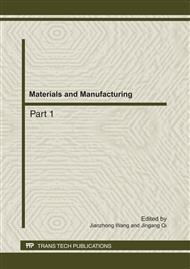p.1146
p.1151
p.1157
p.1161
p.1167
p.1171
p.1178
p.1182
p.1186
A Regression Model for Force and Surface Roughness Estimation during Hard Turning
Abstract:
Forces in Hard turning can be used to evaluate the performance of the process. Cutting parameters have their own influence on the cutting forces on the tool. The present work is an attempt to develop a force prediction model based on full factorial design of experiments for machining EN31 steel (equivalent to AISI 52100 steel) using uncoated CBN tool. The force and surface roughness regression models were developed using the data from various set of experiments with in the range of parameters selected. The predictions from the models were compared with the measured force and surface roughness values. The ANOVA analysis was undertaken to test the goodness of fit of data.
Info:
Periodical:
Pages:
1167-1170
Citation:
Online since:
July 2011
Authors:
Keywords:
Price:
Сopyright:
© 2011 Trans Tech Publications Ltd. All Rights Reserved
Share:
Citation:


